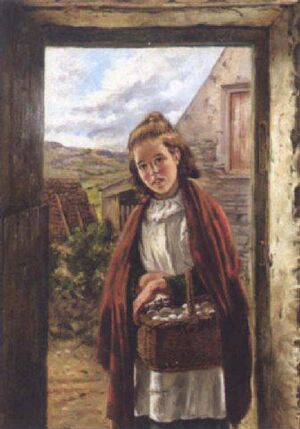James Brenan facts for kids
James Brenan (born 1837 – died 7 August 1907) was a famous Irish artist. He was known for his paintings and for teaching art.
Early Life and Art Education
James Brenan was born in Dublin, Ireland, in 1837. He went to school at Strong's school and then Dr. Stuarts. From a young age, he showed a talent for art.
He began his art training at the Royal Dublin Society school of design. When he was just 14 years old, he moved to London. There, he continued to study art, focusing on decorative arts.
Brenan's Art Career and Teaching
James Brenan became one of the most popular painters in Ireland during the 1800s. In London, he studied decorative arts with famous artists like Owen Jones and Matthew Digby Wyatt.
Between 1855 and 1860, Brenan trained in England. He first attended the Art Teacher Training School in London. He also spent time at an Art school in Birmingham. He liked the Birmingham school so much that he returned there a year later. In 1853, he won a special prize medal for his work in science and arts.
In 1860, Brenan became the headmaster of the Cork School of Art. A year later, he started working with the Royal Hibernian Academy. In 1889, he was made headmaster of the Dublin Metropolitan School of Art.
Brenan taught many students who later became famous artists themselves. Two of his well-known students were Henry Jones Thaddeus and William Orpen. Brenan also started new design classes. These classes helped to improve the lace-making industry and other crafts in Ireland.
After he retired, George Tindall Plunkett praised Brenan's work. He said that Brenan would always be remembered for his great success. He also noted how highly the school was thought of under Brenan's leadership.
Brenan's Lasting Impact
James Brenan had a big impact on Irish art and crafts. He started classes for lace making and lace design at the Crawford Municipal School of Art. These classes helped make lace making popular across Ireland from 1886 to 1914. People say that before Brenan, lace design was not very important.
His constant efforts helped introduce new crafts in Dublin in the early 1900s. This shows how much he helped Irish artists and craftspeople.
In 2009, one of his paintings, 'Morning Prayer, Cottage Interior, County Cork, 1901', was sold for 9,500.


